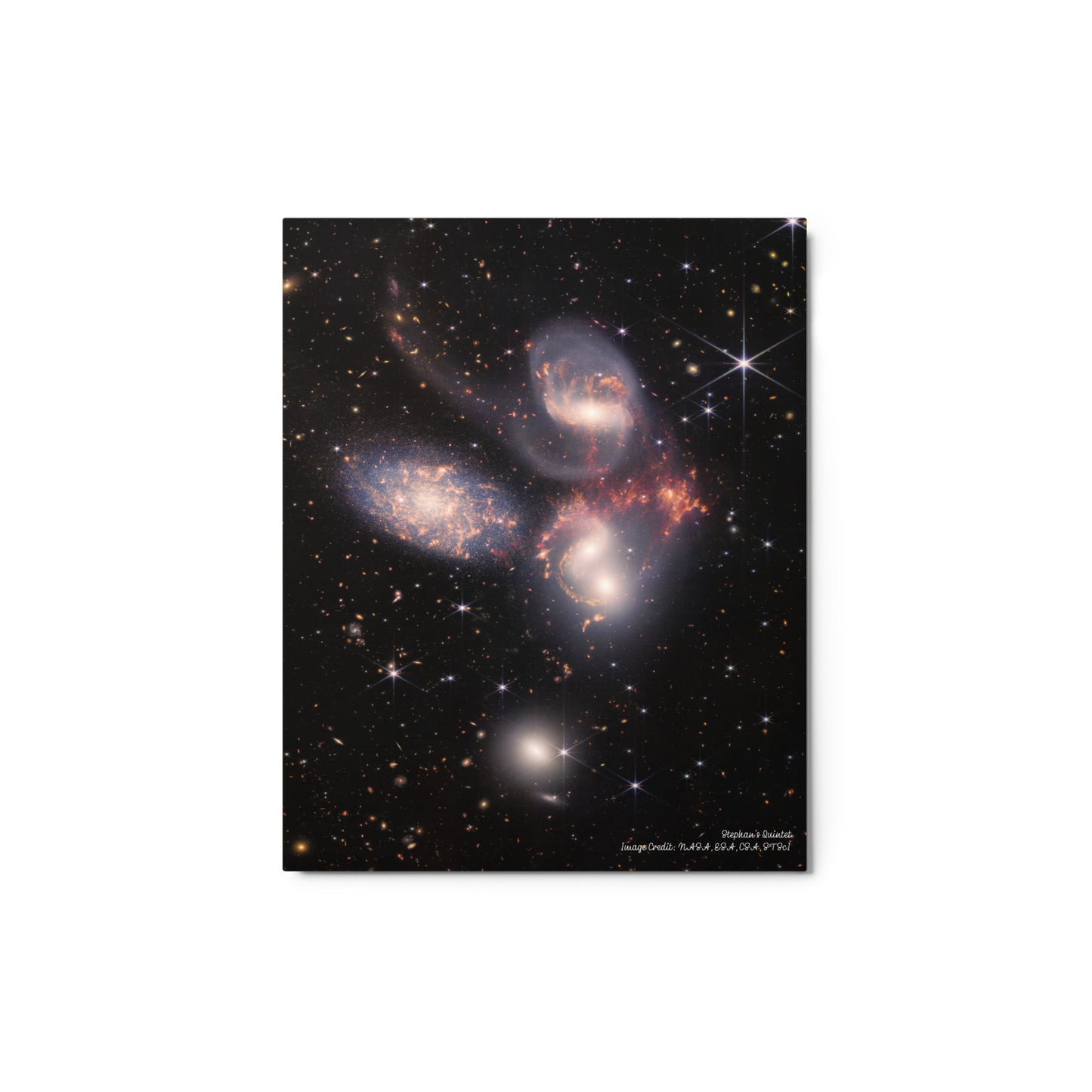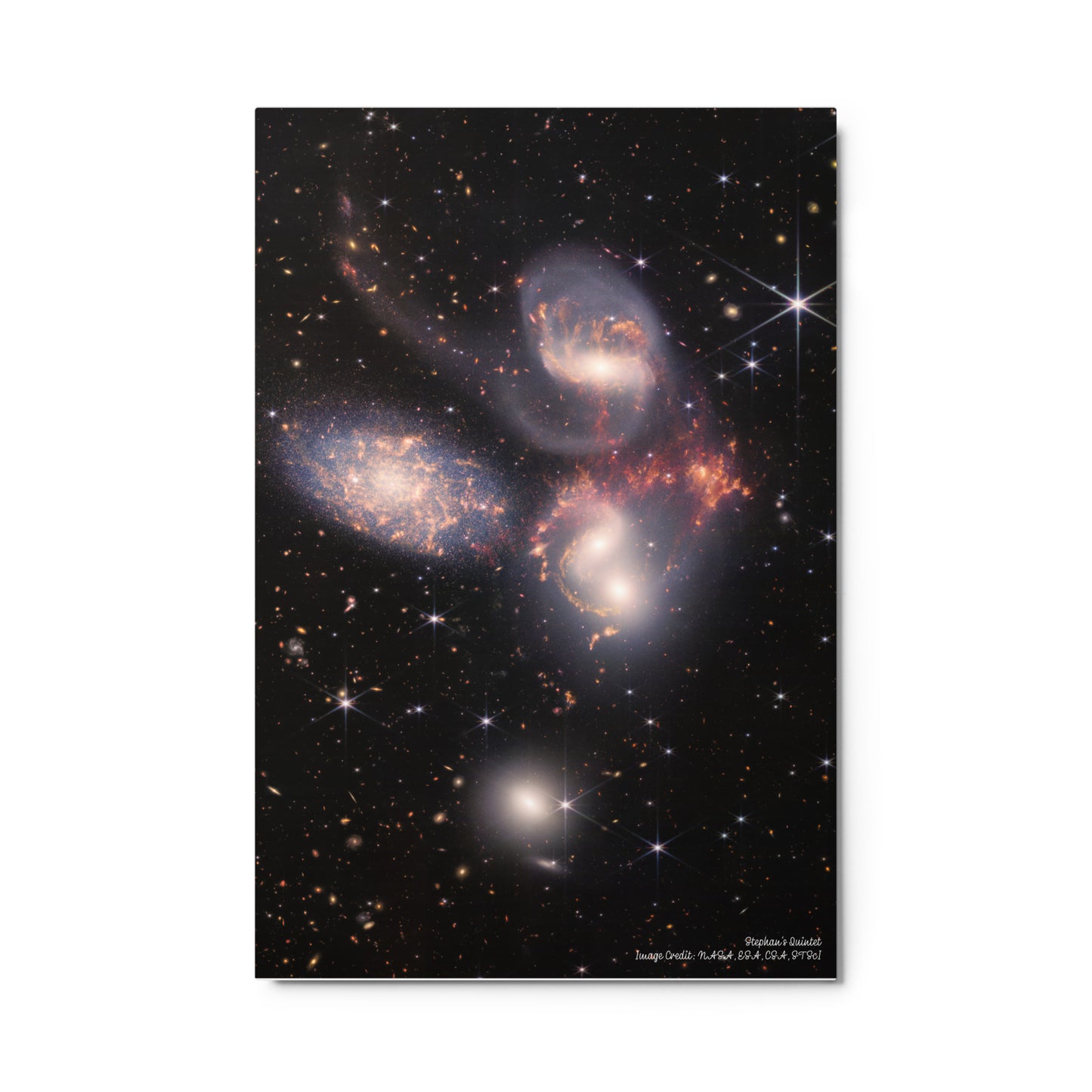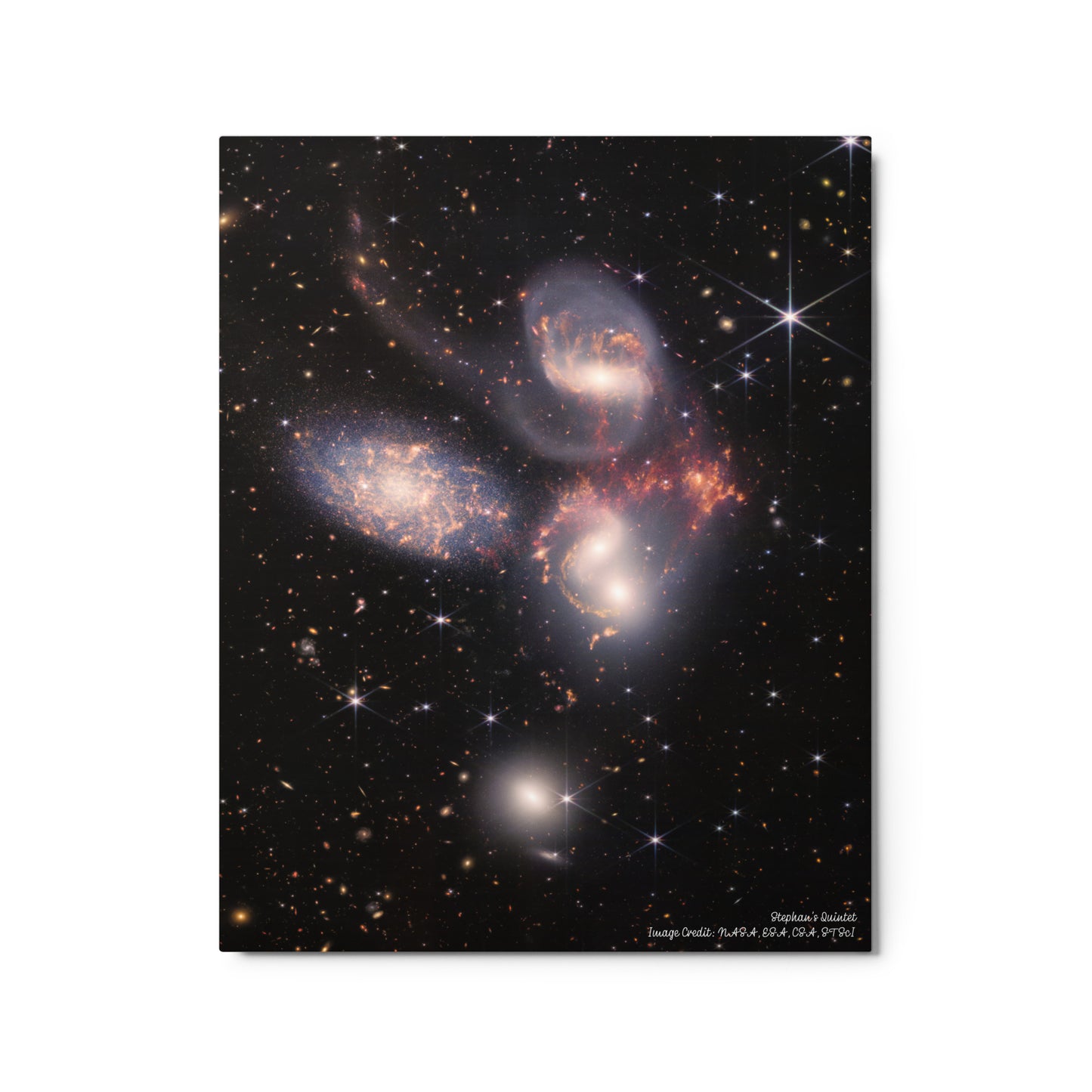Stephan's Quintet, Metal prints
Stephan's Quintet, Metal prints
Couldn't load pickup availability
Bring the Universe Home: High-Quality Metal Prints
Transform your space with stunning cosmic wonders. These high-quality metal prints showcase the universe's vibrant colors and intricate details in a way that has never been seen before.
Lasting Visions of the Cosmos:
Scratch- and Fade-Resistant: Crafted with a durable aluminum surface, these prints withstand everyday wear and tear.
Exceptional Vibrancy: The meticulous printing process utilizes the metal's reflective properties to create stunningly vivid colors that bring the cosmos to life.
Easy to Care For: Simply wipe clean with a damp cloth, making them ideal for high-traffic areas.
Multiple Sizes Available: Find the perfect fit for your space, whether you're seeking a captivating focal point or a mesmerizing gallery wall.
Modern Elegance:
These metal prints boast a sleek and contemporary aesthetic, a touch of sophistication. The artwork appears almost luminescent against the wall, adding a unique dimension to your décor.
Stephan's Quintet
An enormous mosaic of Stephan's Quintet is the largest image to date from NASA's James Webb Space Telescope, covering about one-fifth of the Moon's diameter. It contains over 150 million pixels and is constructed from almost 1,000 separate image files. The visual grouping of five galaxies was captured by Webb's Near-Infrared Camera (NIRCam) and Mid-Infrared Instrument (MIRI).
With its powerful, infrared vision and extremely high spatial resolution, Webb shows never-before-seen details in this galaxy group. Sparkling clusters of millions of young stars and starburst regions of fresh star birth grace the image. Sweeping tails of gas, dust, and stars are being pulled from several of the galaxies due to gravitational interactions. Most dramatically, Webb's MIRI instrument captures huge shock waves as one of the galaxies, NGC 7318B, smashes through the cluster. These regions surrounding the central pair of galaxies are shown in the colors red and gold.
This composite NIRCam-MIRI image uses two of the three MIRI filters to best show and differentiate the hot dust and structure within the galaxy. MIRI sees a distinct difference in color between the dust in the galaxies versus the shock waves between the interacting galaxies. The image processing specialists at the Space Telescope Science Institute in Baltimore chose to highlight the difference by giving MIRI data distinct yellow and orange colors, contrasting with the blue and white colors assigned to stars at NIRCam's wavelengths.
Together, the five galaxies of Stephan's Quintet are also known as the Hickson Compact Group 92 (HCG 92). Although called a "quintet," only four of the galaxies are truly close together and caught up in a cosmic dance. The fifth and leftmost galaxy, called NGC 7320, is well in the foreground compared with the other four. NGC 7320 resides 40 million light-years from Earth, while the other four galaxies (NGC 7317, NGC 7318A, NGC 7318B, and NGC 7319) are about 290 million light-years away. This is still relatively close in cosmic terms, compared with more distant galaxies billions of light-years away. Studying these relatively nearby galaxies helps scientists better understand structures seen in a much more distant universe.
This proximity provides astronomers a ringside seat for witnessing the merging and interactions between galaxies, which are crucial to all of galaxy evolution. Rarely do scientists observe in such exquisite detail how interacting galaxies trigger star formation in each other and how the gas in these galaxies is being disturbed. Stephan's Quintet is a fantastic "laboratory" for studying these processes fundamental to all galaxies.
Tight groups like this may have been more common in the early universe when their superheated, infalling material may have fueled very energetic black holes called quasars. Even today, the topmost galaxy in the group – NGC 7319 – harbors an active galactic nucleus. This supermassive black hole is actively accreting material.
In NGC 7320, the leftmost and closest galaxy in the visual grouping, NIRCam was remarkably able to resolve individual stars and even the galaxy's bright core. Old, dying stars that are producing dust clearly stand out as red points with NIRCam.
Constellation: Pegasus
Dimensions: Image is about 7.4 arcmin across (about 620,000 light-years)
Distance: 290 million light-years (89 million parsecs)
Exposure Dates: 11 June 2022; MIRI: 11-12 June, 1 July 2022
Image Credit: NASA, ESA, CSA, STScI
Share




